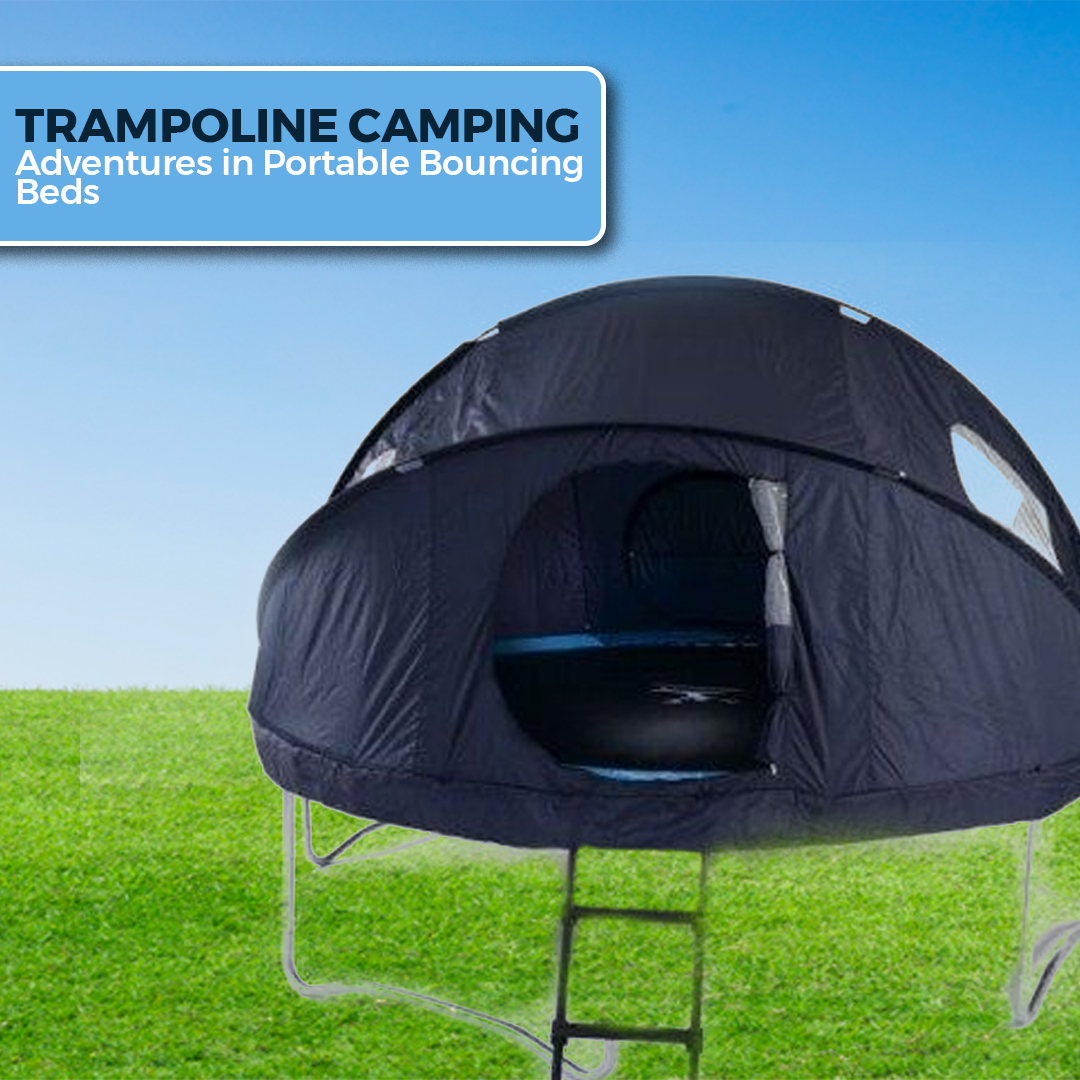
Trampoline camping, or ‘tramping’ as the children call it, is one of the latest crazes in the UK for adventure seekers and thrill-chasing families. The basic idea is simple: load up your garden trampoline, drive to a campsite, and use it as your bed for the night under a canopy of stars. While it may sound slightly mad, trampoline camping offers an exciting new way to experience the great outdoors and bond over bouncing!
Many campsites and holiday parks across Britain now offer designated areas for trampoline camping. Some of the best locations include Cotswolds, Peak District, Snowdonia and Scottish Highlands. These areas offer stunning scenery by day and dark skies ideal for stargazing at night. Private campsites will often allow trampolining if you check with them first.
In this blog, we will talk about the trampoline camping, from setting up a camp to acknowledging you about the gears you will need and the safety precautions.
The Appeal of Trampoline Camping
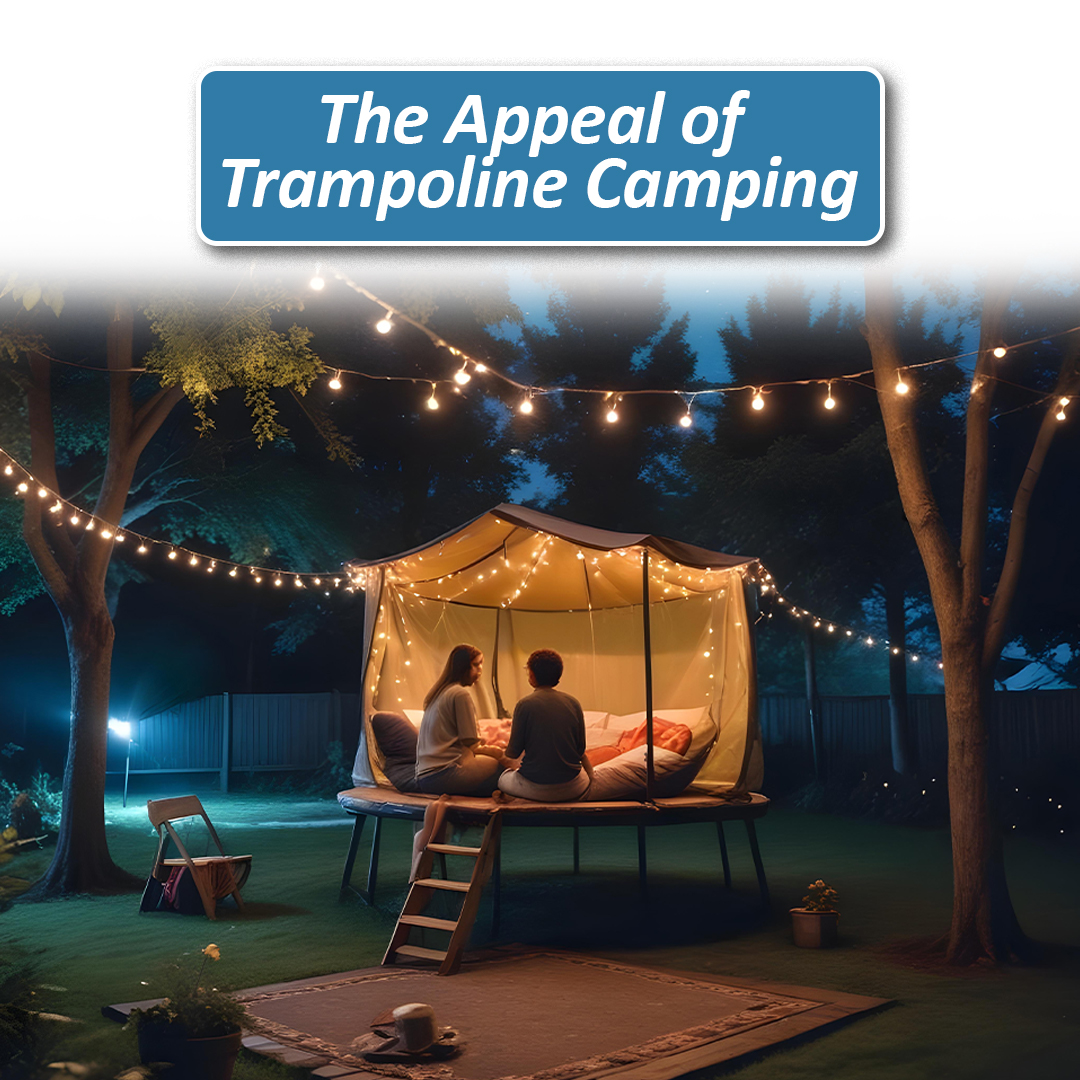
For the thrill-seeking camper, trampoline camping offers an exciting twist on the usual tent-and-campfire experience.
There’s something liberating about sleeping under the stars while gently bouncing. Trampoline camping attracts those looking to inject a bit of whimsy and playfulness into their outdoor adventures.
Unique Perspectives
Lying on your back and gazing up at the night sky or watching the sunrise from a garden trampoline gives you a unique perspective that’s hard to achieve when confined in a tent. Spotting constellations, watching meteors zip by, and awakening to a sky filled with vibrant colour are simple pleasures made more magical when experienced while softly bouncing.
All the Fun of Camping
Trampoline camping still provides many of the usual camping delights like cooking over an open fire, telling spooky stories, and enjoying nature. You get the adventure of camping in the great outdoors combined with the novelty of an oversized playground. What’s not to love?
With stunning views, playful experiences, and all your favourite parts of camping, it’s no wonder trampoline camping is gaining popularity among recreational adventurers and families looking to create cherished memories together under the open skies. If you’re keen on unconventional camping with a touch of whimsical fun, trampoline camping may be just the escape you’ve been bouncing for.
Choosing the Right Trampoline for Camping
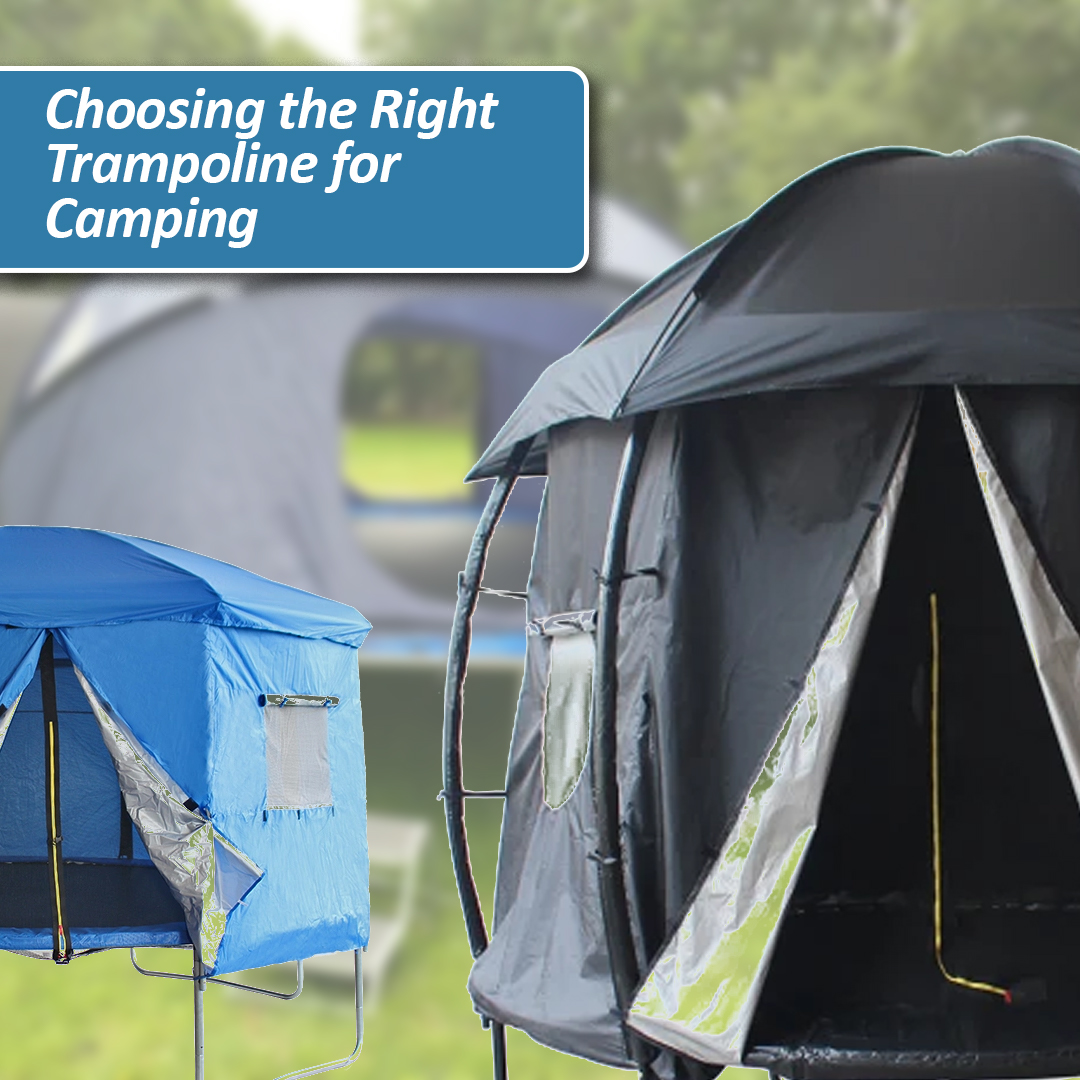
When picking a garden trampoline to take camping, size is key. You’ll want a trampoline that’s easy to transport and set up. Look for trampoline, around 8 to 12 feet in diameter. You can also so with a larger 14ft trampoline.
Weight
Consider how much the trampoline weighs when disassembled. A lighter model, around 20 to 40 kilograms, will be much more portable and easier to carry parts of between campsites. Heavier trampolines require multiple people to move and set up, which isn’t ideal when camping.
Durability
Choose a trampoline built for outdoor use, with a rugged frame and weather-resistant mat. Camping means exposure to elements like rain, dirt and UV radiation. An outdoor trampoline will withstand these better. Look for galvanized steel frames and polyethylene mats.
Ease of Assembly
An easy-to-assemble garden trampoline is essential for camping. Look for a model with snap-on pads and nets, rather than one you have to lace up. Legs that fold inward and a folding mat will pack up fast. Models with simple, secure latches to connect the frame pieces are best. The easier it is to put together, the more jumping time you’ll have!
Setting Up Camp: Tips and Tricks

First, scout the camping area for an ideal spot to set up your trampoline. Look for a flat, even surface without any sharp objects underneath. Grass, dirt or sand are good options. Place the trampoline on a slight incline so rainwater flows away. Ensure there are no overhanging branches that could damage the trampoline.
Assemble the Frame
Lay out all the trampoline parts and assemble the frame according to the instructions. Make sure the legs are securely connected to the circular frame pad. For added stability, you can bury about 6 to 8 inches of the trampoline legs in the ground. This helps prevent the trampoline from shifting or tipping over.
Attach the Bed and Safety Pad
Carefully attach the trampoline mat to the frame using the provided springs. Ensure the trampoline bed is centred and securely fastened before continuing. Next, attach the safety pad around the outer edge of the frame for protection. The safety pad should cover the edge of the frame, the edge of the mat and all of the springs. Secure the safety pad in place with the straps or netting provided.
Secure the Trampoline
Use strong straps, ropes or tie-down anchor kits to securely anchor the garden trampoline to nearby trees, large rocks or stakes in the ground. Anchor at least three points, preferably four points, around the trampoline. This prevents the trampoline from shifting or tipping over in strong winds. You can find trampoline anchor kits that provide everything needed to properly secure a trampoline.
Safety First
Establish rules for safe trampoline use before bouncing begins. Only one person at a time, no flips, stay in the centre of the mat, etc. Provide close adult supervision, especially for children. Ensure all straps, pads and anchors remain securely fastened at all times. Following proper setup and safety procedures will help ensure an enjoyable trampoline camping adventure.
Gear Essentials for Trampoline Camping

The most important things you’ll need are comfy sleeping bags, pillows, and blankets to keep you cosy through the night. Opt for sleeping bags rated for summer weather and sleeping pads to provide extra cushioning between you and the trampoline mat. Remember, the trampoline will get chilly at night so pack warm pyjamas and extra blankets.
Anchoring equipment
To prevent your garden trampoline from blowing away during the night, you’ll want to securely anchor it to the ground. Pack heavy-duty straps, stakes, and a mallet to drive the stakes deep into the ground. Attach the straps to the trampoline frame and stakes in the ground around the perimeter. This will keep your trampoline steady in place.
Weather protection
There’s nothing worse than waking up soaking wet from rain or dew. Bring a large waterproof tarp or trampoline cover to place over the top of the trampoline at night. Secure the edges to prevent water from pooling. You’ll also want a smaller tarp to place under the trampoline to protect from moisture on the ground. Pack rope, bungee cords or straps to securely fasten the tarps in place.
Other essentials
Don’t forget a torch or lantern, basic toiletries, towels, plates and cutlery, a basic first aid kit, sun protection, insect repellant, a basic toolkit, and entertainment like cards or board games. Pack everything in waterproof bags, containers or packing cubes in case of rain.
With the proper equipment, trampoline camping can be a fun adventure. But preparation is key—having equipment specifically suited for trampolining and camping will ensure you stay comfortable, safe and dry the entire trip. Happy bouncing and happy camping!
Safety Precautions
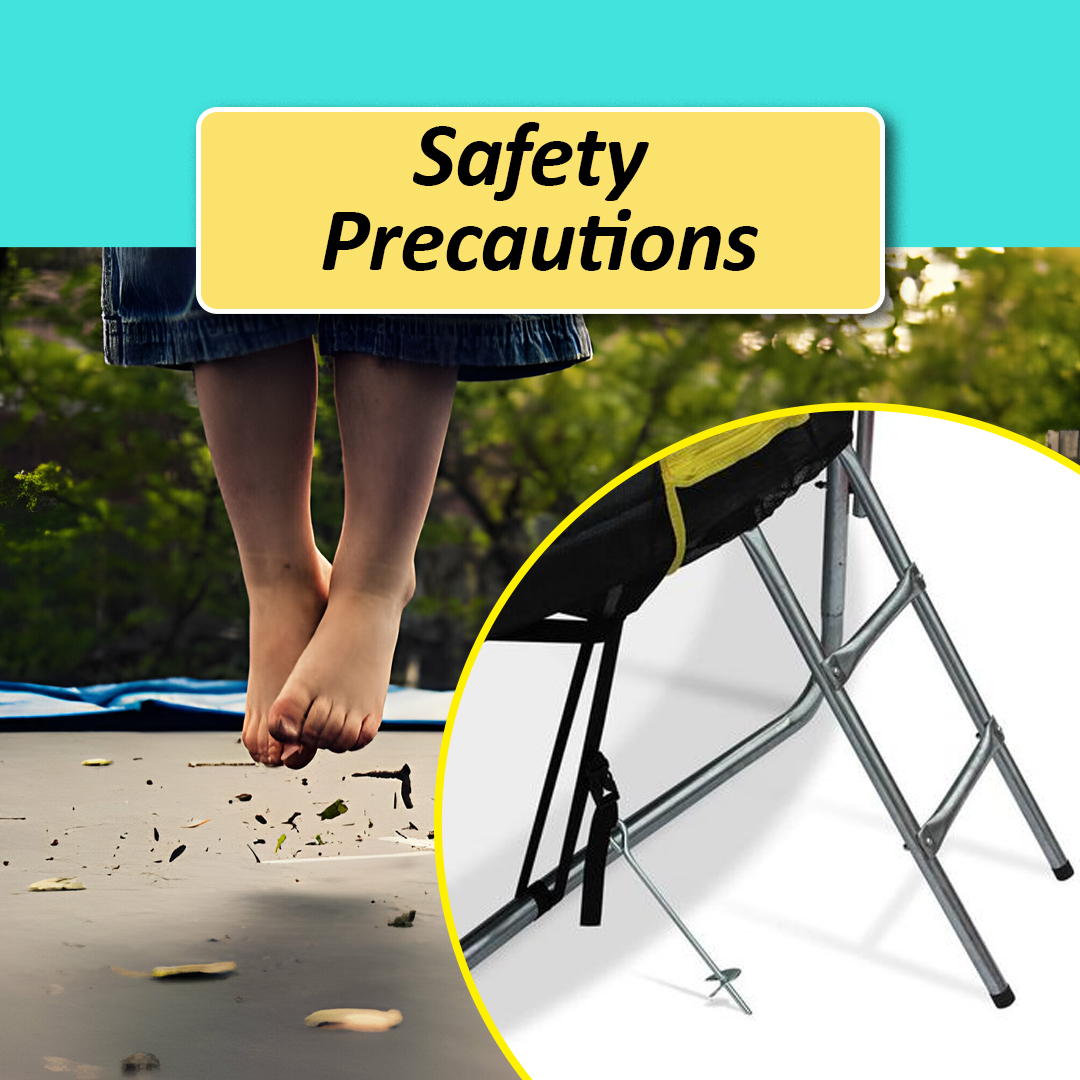
When trampoline camping, following basic safety guidelines is absolutely essential to avoiding injuries and ensuring an enjoyable experience for everyone.
Set up on level ground
Find a flat, level area of ground to set up your trampoline. Uneven or sloping ground can cause bounced to go askew and increase the chance of collisions and falls. Grass or dirt is softer than concrete in case of falls, but beware of unstable or rocky areas.
One at a time
Only one person should bounce at a time. Overcrowding the garden trampoline leads to chaos, collisions and a higher risk of people bouncing into each other or falling off the edge. Take turns and give each other space.
Stay within your limits
know your own limits and don’t try tricks or flips that you haven’t properly learned. Attempting advanced manoeuvres when you’re not ready often ends in injury. Build up your skills over time with practice.
Secure the safety net
If your trampoline has a safety net, ensure it is properly secured before bouncing to prevent falls. The net should be tightly wrapped around the edge of the mat with no loose parts that could trip up bouncers or get caught during tricks.
No shoes, no sharp objects
Remove all sharp objects from your pockets before bouncing, including keys, phones and jewellery. Bare feet only – no shoes are allowed on the trampoline.
By following these essential safety tips, you’ll minimise the risks of trampolining injuries and ensure an enjoyable, carefree experience for everyone at your trampoline campout. Stay safe and have fun!
Tips for Maximizing Enjoyment
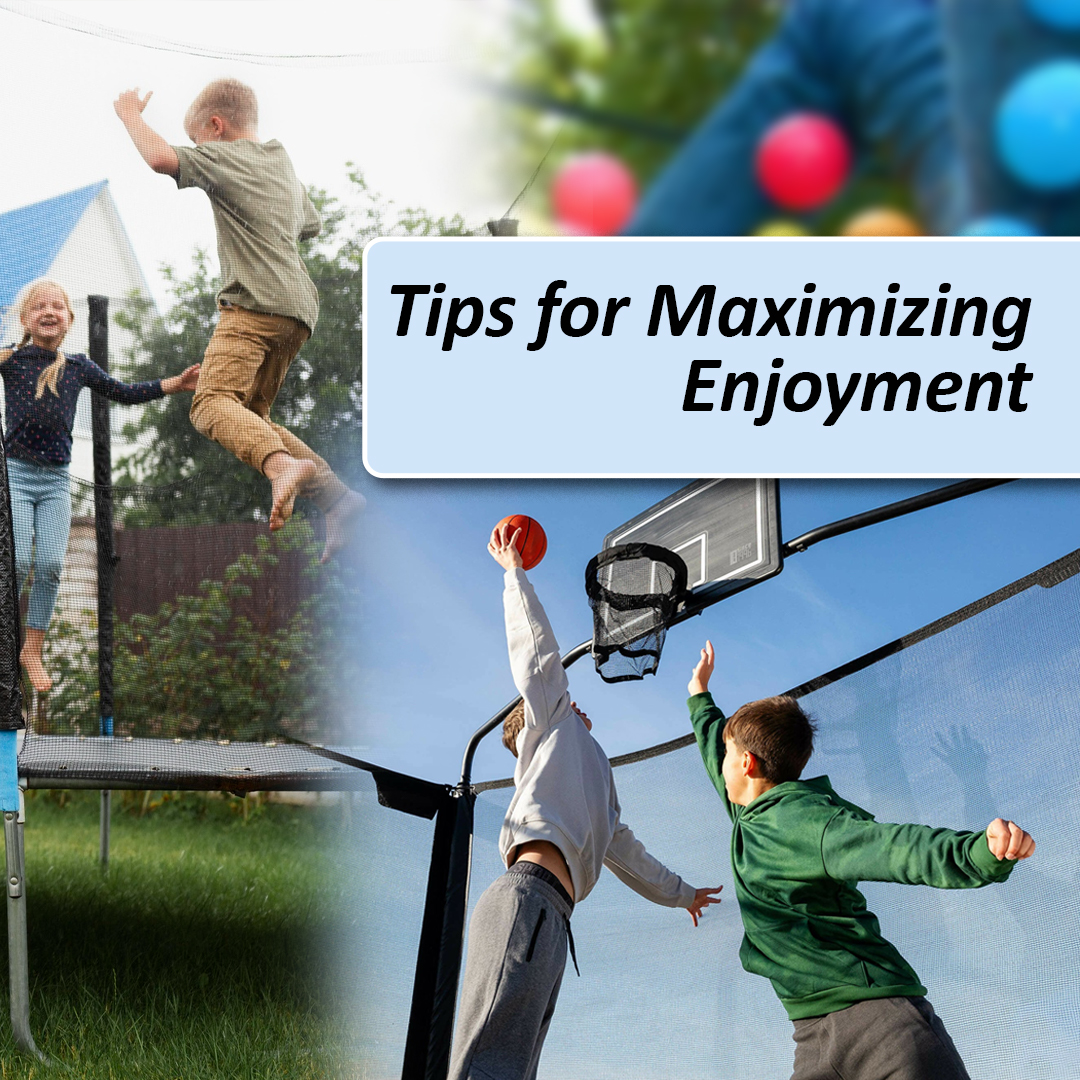
Make sure to pack some essentials to maximise the enjoyment factor. Bring balls, frisbees and other toys suitable for bouncing. Glow sticks or LEDs are brilliant for nighttime bouncing. Don’t forget a water spray bottle for some cooling mist on hot days.
Learn New Skills
Trampolining is a great way to learn new skills in a safe environment. Practice simple front drops, seat drops or knee drops and build up your confidence to try more advanced moves. Have a go at wall drops, where you bounce off the trampoline edge onto the ground. Learn how to properly spot other bouncers so you can try more daring tricks together.
Play Games
There are so many games you can play on a trampoline to bring out your competitive and fun-loving side. Try trampoline basketball using a kid’s basketball hoop or just by aiming for a bucket on the ground. Play catch with balls, frisbees or balloons. Limbo under a pole and see how low you can go. Play hopscotch by sticking tape to the trampoline mat. The options are endless!
Relax Under the Stars
One of the best parts of trampoline camping is being able to relax while stargazing. Bring a sleeping bag, blankets and pillows onto the trampoline, get cosy and gaze up at the night sky. Without the usual light pollution, you’ll be able to see so many stars, constellations and if you’re lucky, the Milky Way. What a perfect way to end an evening of bouncing excitement.
Following these tips will ensure you get the most bounce for your buck and a fun-filled trampolining adventure you’ll never forget! The activities and stargazing will create cherished memories to last for years to come.
Conclusion
Trampoline camping brings a new kind of fun to outdoor adventures in the UK. Instead of sleeping on hard ground, you bounce on a trampoline bed under the stars. It’s exciting and comfy all at once! You’ll need a good trampoline, a tent for shelter, and some basic camping gear. Many campsites across Britain now have spots just for trampoline camping. Think Cotswolds, Peak District, or even the Scottish Highlands!
Trampoline camping is all about having fun. Whether you’re gazing at stars or playing games, every moment is filled with joy. So, if you’re up for an adventure with a bounce, give trampoline camping a try. You won’t regret it!


